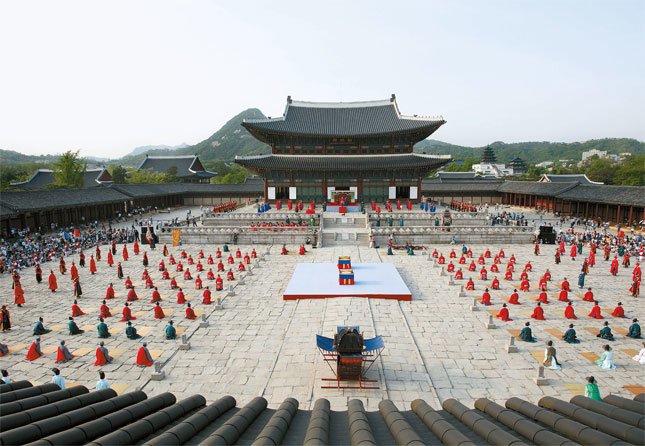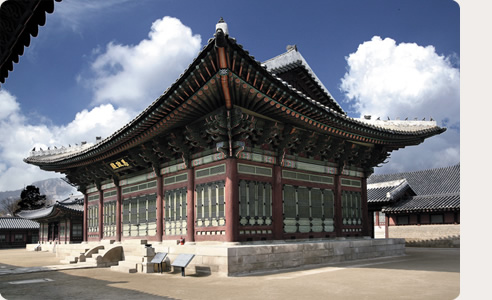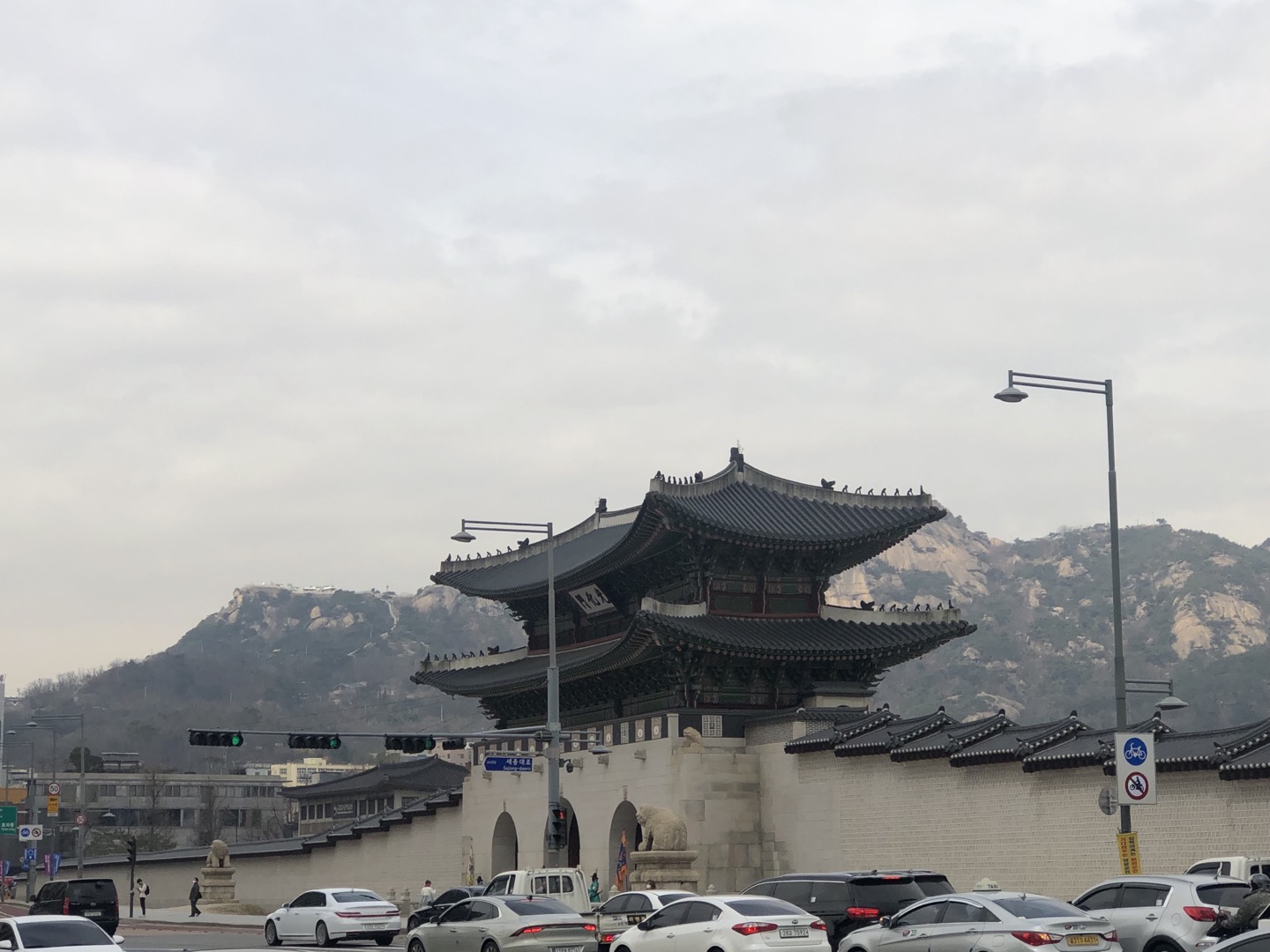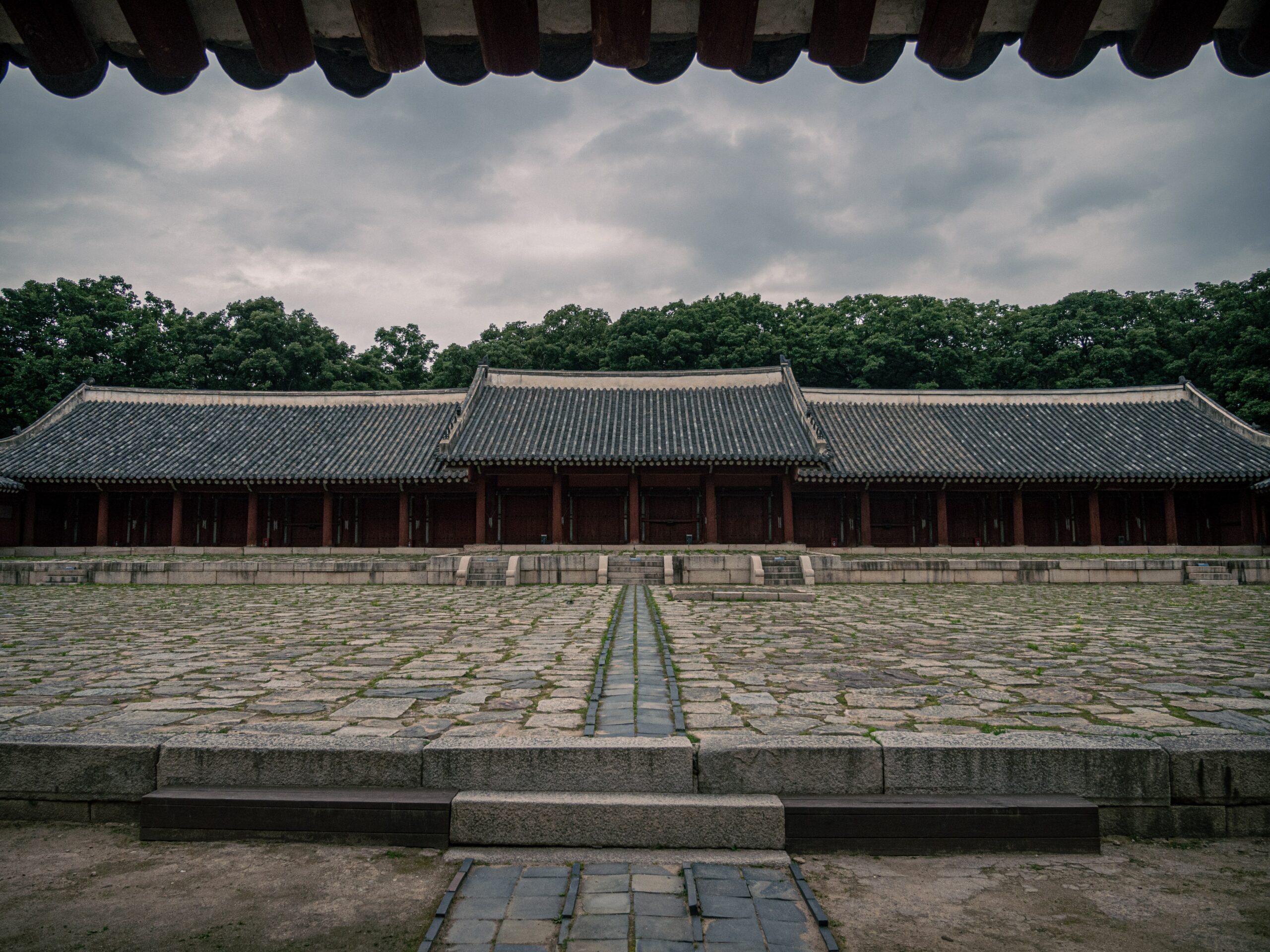What is Genjeongjeon?
Geunjeongjeon is the main hall of the Gyeongbokgung Palace. It looks like a two-storied building, but a single story. The king conducted the state affairs, held official meetings, received the foreign envoys, performed the ceremony of accession to the throne (coronation), and held the royal wedding ceremony.
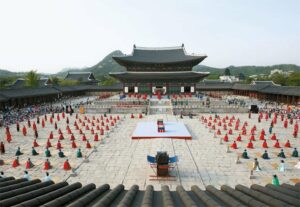
Outside the Geunjeongjeon
Geunjeongjeon is built on a foundation with two terraces. We called Woldae (월대) in Korean. As it is the most important building, this is the only one with two terraces. Also, in terms of the architect, the wooden building is weak at the humidity. Elevated by the stone foundation, it remains protected from ground humidity.
Two stones, known as Daptdo (답도) in Korean, bear engraved phoenixes. These stepping stones supported the king’s sedan chair as it was carried.
You can see the handrails on each terrace, there are 4 guardians presenting the four different cardinal directions. The blue dragon, white tiger, red phoenix, black tortoise. Also, there are 12 zodiac animals including a mouse, tiger, cow, etc. there are two golden dragons at the center of the ceiling of Geunjeongjeon main hall, which is the symbol of a king who reigns over everything on earth with 4 guardians.
You can also find a three-legged pot and a big jar right next to the Geunjeongjeon main hall. Jung (정) and Doemeu (드므), named as such, played crucial roles. Jung heightened Geunjeongjeon’s authority with incense, showcasing the king’s legitimacy. Doemeu stored water for fire emergencies, vital due to the prevalent use of flammable wood in buildings. Also, we have a belief that the fire demon on his way to Geunjeongjeon makes some bad things with fire was chased away when it encountered the Doemeu. What happened was that the fire demon ran away the moment it saw its ugly face reflected on the water in Doemeu for the first time in its life.
Inside the Geunjeongjeon
Now, we will see inside of the Geunjeongjeon main hall. You can see the chair that was reserved only for the king and there is a big folding screen behind. It’s Irworobongdo(일월오봉도). Ir(일) means the sun, Wor(월) means the moon, and Obong(오봉) means the five holy mountains in Korea. The sun represents the king, the moon stands for the officials and the 5 holy mountains show east, west, south, north, and center in Korea, which is nations. And the water waves represent a wish that the king’s rule may reach all different corners of the country. In shorts, it means that the king works hard with his subjects for his nation. The painting always accompanied the king, placed behind the royal seat as a symbol of his presence.
The ceiling features two golden dragons with seven claws, known as Chiljoryong (칠조룡), symbolizing the king.
